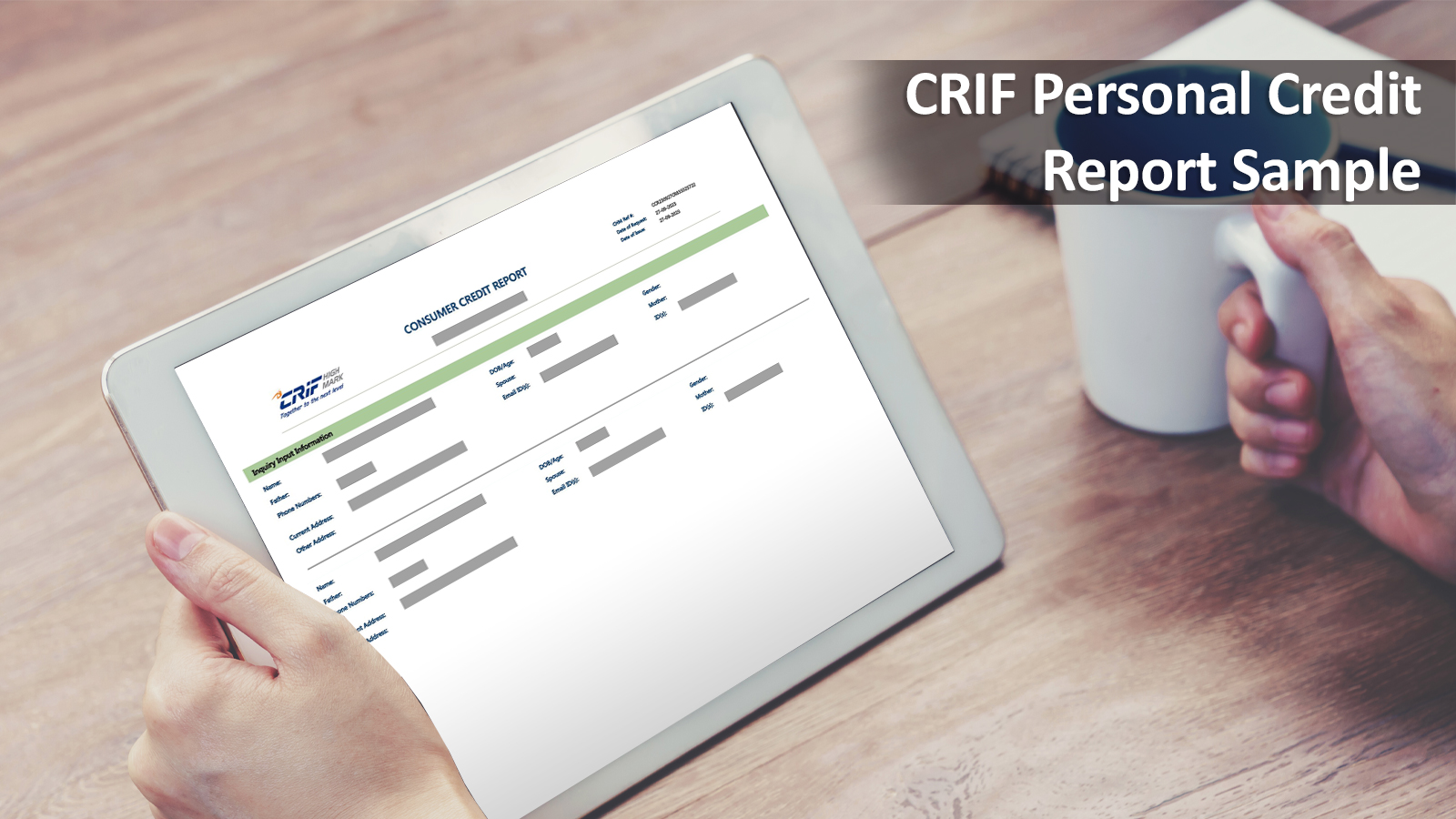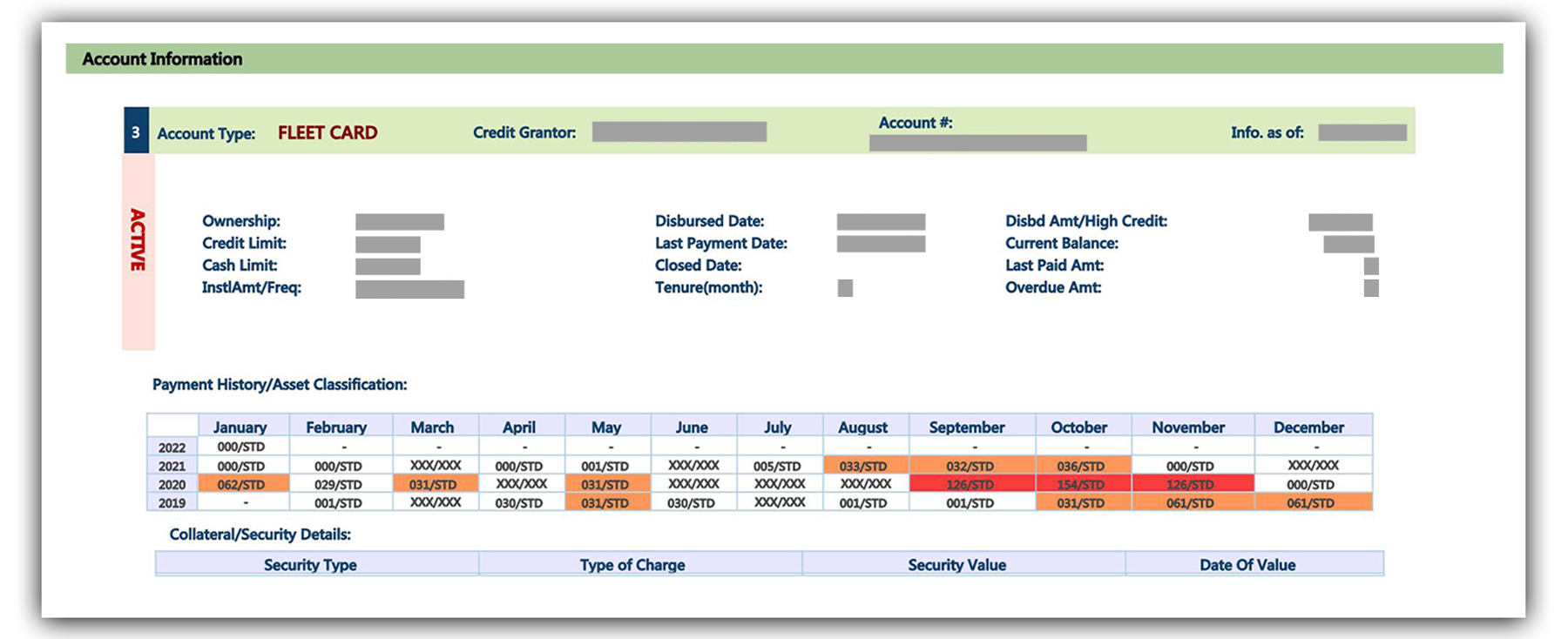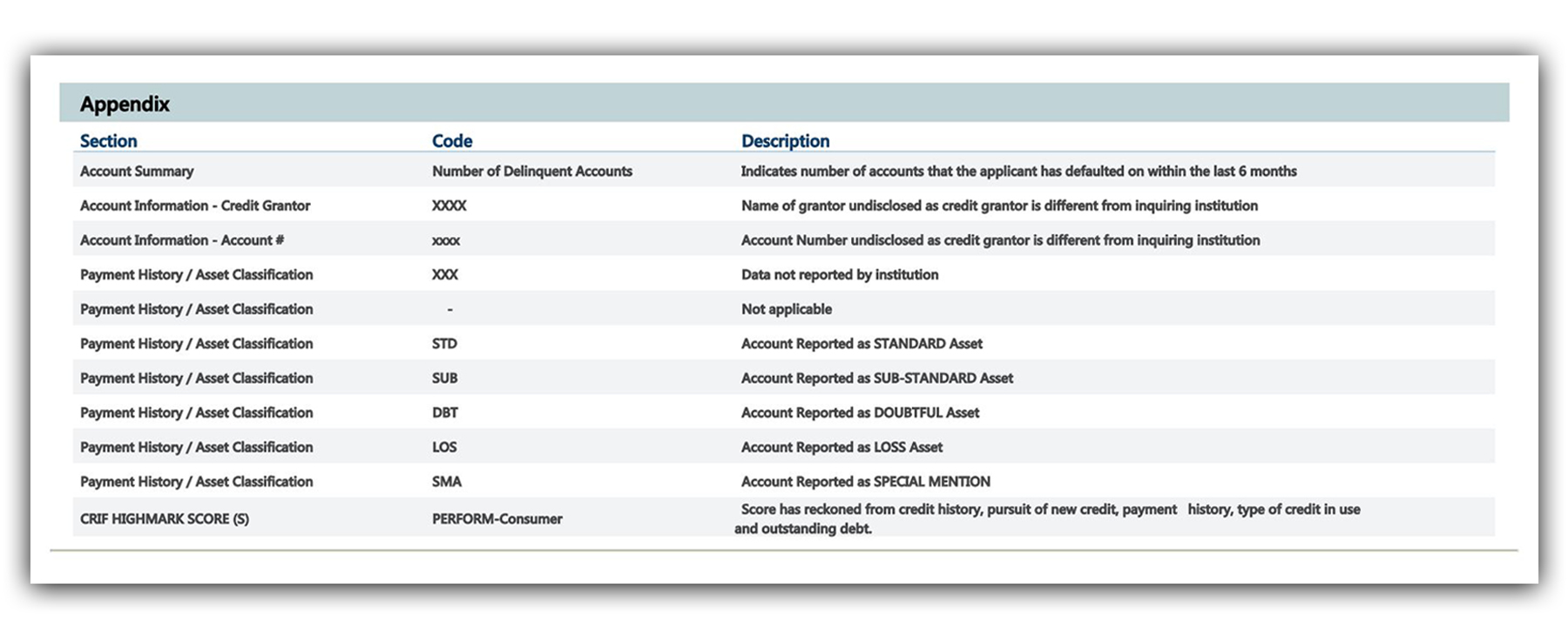
The CRIF Personal Credit Report Sample and Reading Guide
Personal credit reports and scores are an integral part of the loan application process, defining the creditworthiness of an individual. It has a tremendous significance in dictating their odds of getting a loan or getting favourable lending terms. Understanding and interpreting a personal credit report can be challenging for many people.
If you’re wondering ‘what is CRIF credit report’, it is a document generated by CRIF High Mark, one of India’s leading credit bureaus, that captures your credit history, loan accounts, repayment behaviour, and creditworthiness in a structured format.
So, let’s start with what exactly is in a personal credit report. This blog acts as a credit report guide, helping you decode every section with clarity and purpose. A credit report may have information about:
- Personal Details: Information like your name, address, contact details, and other identifiable information.
- Personal Credit Score: A number reflecting your creditworthiness based on your credit behaviour and credit history.
- Loan History: Details of every loan or credit service you have availed in the past, repayment history, and status of all accounts. This may also include any loans you have guaranteed or cosigned.
- Past Inquiries: Information about any hard inquiries initiated by lenders corresponding with the credit services you have attempted to avail yourself of in the last 24 months.
These are some of the information you can expect to find in your personal credit report, irrespective of the credit bureau compiling the report. The actual credit report is much more detailed and comprehensive.
Read on to learn how you can read and understand your personal credit report and what a sample of each section of a credit report might look like. In this credit report guide, we’ll break down the CRIF report step by step, so you can fully understand what each detail means and how it affects your credit health.
How to Read and Interpret Your CRIF Personal Credit Report
If you’ve ever wondered how to read a credit report, this section will walk you through the most important components of your CRIF report and what each part reveals. The first step in understanding your personal credit report is to familiarise yourself with the different sections of the report and the information they provide to prospective lenders. Here is a brief description, with sample screenshots, of different sections of CRIF’s personal credit report:
Inquiry Input Information
After the header outlining the name, date of request, date of issue, and reference number for the credit report, the first section outlines your personal details. This includes your name, date of birth, age, gender, names of your parents and spouse, your address (current and other), contact details (phone number and email ID), and details of the ID you have provided.

CRIF High Marks Score/s
Effective credit report reading allows you to quickly identify red flags like missed payments or over-leveraging that could harm your score. This section outlines your score name and credit score, along with a risk descriptor to summarise your creditworthiness and credit risk. The score ranges from 300 to 900, with higher scores indicating better creditworthiness. Risk description is depicted as a single alphabet, where:
- A – D: Very Low Risk
- E – G: Low Risk
- H – I: Medium Risk
- J – K: High Risk
- L – M: Very High Risk
Additionally, outlines the key elements of score calculations – namely, payment history, age and type of credit, credit limit use, total balance, and recent credit behaviour, along with their influence on the credit score.

Personal Information – Variations
This section highlights all demographic variations of personal information available to the credit bureau. The last reporting date for each variation – name, address, ID, date of birth, or contact details – is also included in the report.

Account Summary
This section summarises all your accounts, outlining details such as the number of accounts, active and overdue accounts, current balance, amount disbursed, number of inquiries within the last 24 months, number of new accounts in the previous 6 months, and new delinquent accounts in the last 6 months.

Account Information
This section provides details about each of your credit accounts, including the account type, payment history, security details, and linked accounts. It is crucial during credit report reading, as lenders closely evaluate your repayment behaviour and outstanding balances here. This will include:
- Account type
- Account ownership
- Credit and cash limits
- Instalment amount and frequency
- Name of the creditor
- Disbursement date
- Last payment date
- Closure data
- Loan tenure
- Account number
- Disbursed amount
- Current balance
- Last paid amount
- Overdue amount
This section also highlights whether the account is active or closed and outlines the repayment history for the past 36 months (or disbursement date). You will also find collateral and security details for each account under this section.

Inquiry Done by Lenders (Reported for Past 24 Months)
This section lists the details of all the hard inquiries from different lenders or financial institutions during the last 24 months. The list includes details such as lender name, date of inquiry, purpose, ownership type, amount, and remarks about each inquiry.

Comments
This section is reserved for any special comments or remarks for the borrower that may influence their creditworthiness or their financial health.

Appendix
This last section of a CRIF personal credit report lists all the codes and abbreviations in different sections of the credit report, along with their description, to make it easier to read, interpret, and understand your personal credit report. Refer to this list while you read credit report entries to decode abbreviations, payment statuses, and account activity accurately.

Conclusion
To effectively understand credit report details and their impact on your loan eligibility, your personal credit report plays an important role when applying for a loan. It is a great tool to demonstrate your creditworthiness to lenders and to attract favourable lending terms. Keeping an eye on your credit report can also help you identify any potential problem areas, errors, or suspicious activity to keep your credit score in check and improve your financial health. Understanding ‘what is CRIF credit report’ helps individuals proactively manage their financial profiles and resolve discrepancies before they impact loan eligibility.
Once you understand how to read and interpret your credit score, you can work towards building your credit score, lowering your risk profile, and learn how to read a credit report to avoid common mistakes that may impact your score.
CRIF can help you monitor your credit score and take the first step toward establishing good credit. Whether you’re new to credit reports or trying to resolve a discrepancy, this credit report guide equips you with the knowledge to take control of your credit journey. Check your credit score in minutes and get your CRIF personal credit report to assess your financial health.
Read More: Do Personal Loans Affect Credit Score?
